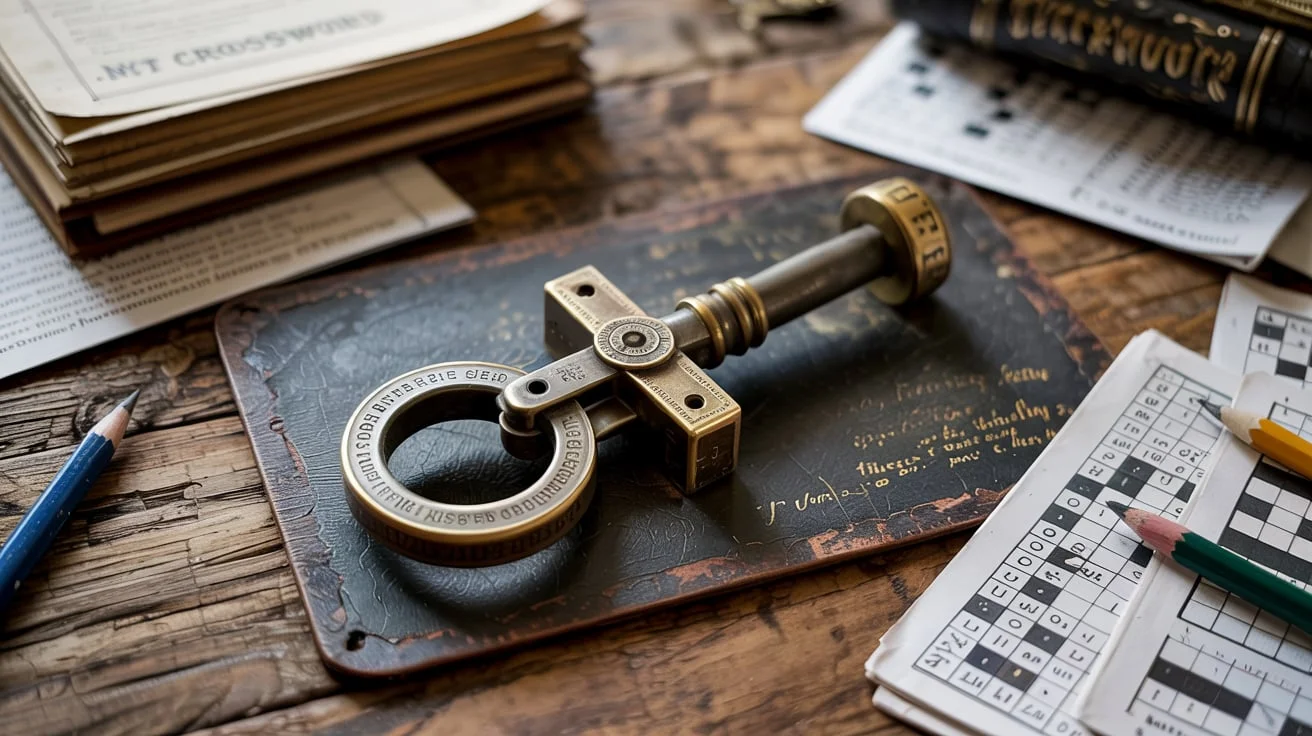The New York Times crossword puzzle, often affectionately dubbed the “NYT crossword,” has been a daily staple for millions of solvers around the globe. Known for its clever clues, challenging grids, and occasional puns, the crossword is more than just a pastime; it’s a cultural phenomenon. Among the many intriguing terms and phrases that pepper its puzzles, “vault opener” is one that stands out, both for its conceptual richness and its knack for sparking curiosity. What exactly does a vault opener mean in crossword parlance, and why does it captivate solvers?
The Vault Opener: A Riddle Within a Riddle
In the world of crosswords, a “vault opener” can signify a variety of things depending on the context. At its most literal, it might suggest a mechanism or tool used to open a physical vault, such as a key or a code. But in crossword puzzles, clues often operate on multiple levels, blending literal meanings with wordplay. For instance, “vault opener” might refer to a word that begins a phrase associated with vaults, like “spring” in “springboard” or “pole” in “pole vault.”
This dual-layered interpretation is a hallmark of the NYT crossword’s charm. It teases the solver’s brain, encouraging them to think laterally and explore possibilities beyond the obvious. Vault opener clues exemplify this dynamic, blending linguistic dexterity with a dash of mischief. They challenge solvers to ask themselves: Am I interpreting this clue too literally? Is there a metaphorical or pun-based angle I’m missing?
The Art of Puzzle Crafting
Behind every engaging crossword puzzle is the mind of a talented constructor. These wordsmiths are masters of their craft, weaving grids that balance difficulty with entertainment. To include a term like “vault opener,” a constructor must carefully consider its placement within the grid, its intersections with other words, and its clue’s potential ambiguity.
Constructing a crossword puzzle is akin to composing a piece of music. There’s rhythm in the way clues flow, harmony in how answers interlock, and crescendo in the “aha” moments when solvers crack a particularly tricky clue. Terms like “vault opener” often serve as highlights, giving solvers a satisfying payoff once they decode the clue’s intention.
Why We Solve
What drives millions of people to engage with the NYT crossword daily? Beyond the obvious joy of solving, there’s a sense of community and tradition. For some, it’s a morning ritual paired with coffee; for others, a shared activity with friends or family. The crossword fosters a unique bond among its solvers, a collective acknowledgment of the joy found in wordplay and intellectual challenge.
The “vault opener” clue, like many others, embodies the puzzle’s spirit of curiosity and discovery. It reminds us why we solve in the first place: to grapple with the unknown, to find delight in the unexpected, and to revel in the thrill of figuring things out.
Tips for Tackling Tricky Clues
Encountering a clue like “vault opener” might initially stump even seasoned solvers. Here are a few strategies to approach such enigmatic prompts:
- Think Literally and Figuratively: Start by considering the most straightforward interpretation of the clue. If that doesn’t fit, explore potential metaphors or wordplay.
- Look at Crosses: Often, intersecting words can provide hints about the structure or letters of the answer.
- Consider Common Themes: NYT crosswords frequently have themes that connect various clues. If the puzzle’s title or other answers suggest a pattern, use that as a guide.
- Keep an Open Mind: Crosswords are meant to stretch your thinking. Be ready to abandon initial assumptions if they lead to dead ends.
- Enjoy the Journey: Remember, every puzzle is a learning experience. Even if a “vault opener” clue eludes you, the process of puzzling through it sharpens your skills for the next challenge.
The Legacy of the NYT Crossword
The New York Times published its first crossword on February 15, 1942. Since then, it has grown into a beloved institution, known for its wit and innovation. Each puzzle is a snapshot of its time, reflecting contemporary culture, language, and events. The “vault opener” and other clever clues are part of this evolving legacy, showcasing the crossword’s ability to surprise and delight across decades.
For many solvers, the crossword is more than just a pastime; it’s a way of life. It’s a space to challenge oneself, to escape from the hustle of daily routines, and to connect with a broader community of enthusiasts. The NYT crossword’s enduring appeal lies in its ability to balance tradition with creativity, offering something fresh with every grid.
Vaulting Forward
As language evolves and new cultural references emerge, so too will the crossword. Terms like “vault opener” highlight the puzzle’s capacity to remain dynamic, inventive, and engaging. Whether you’re a seasoned solver or a curious beginner, the NYT crossword invites you to step into its world of clues and challenges.
So the next time you encounter a “vault opener” in your puzzle, take a moment to appreciate the layers of thought and craft behind it. Whether the answer is a literal “key” or a conceptual “spring,” it’s a testament to the enduring magic of wordplay. Happy solving!
